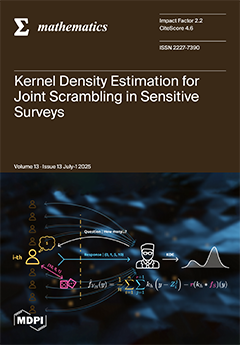The implementation of chaotic behavior and a sensitivity assessment of the newly developed M-fractional Kuralay-II equation are the foremost objectives of the present study. This equation has significant possibilities in control systems, electrical circuits, seismic wave propagation, economic dynamics, groundwater flow, image and
[...] Read more.
The implementation of chaotic behavior and a sensitivity assessment of the newly developed M-fractional Kuralay-II equation are the foremost objectives of the present study. This equation has significant possibilities in control systems, electrical circuits, seismic wave propagation, economic dynamics, groundwater flow, image and signal denoising, complex biological systems, optical fibers, plasma physics, population dynamics, and modern technology. These applications demonstrate the versatility and advantageousness of the stated model for complex systems in various scientific and engineering disciplines. One more essential objective of the present research is to find closed-form wave solutions of the assumed equation based on the
-expansion approach. The results achieved are in exponential, rational, and trigonometric function forms. Our findings are more novel and also have an exclusive feature in comparison with the existing results. These discoveries substantially expand our understanding of nonlinear wave dynamics in various physical contexts in industry. By simply selecting suitable values of the parameters, three-dimensional (3
D), contour, and two-dimensional (2
D) illustrations are produced displaying the diagrammatic propagation of the constructed wave solutions that yield the singular periodic, anti-kink, kink, and singular kink-shape solitons. Future improvements to the model may also benefit from what has been obtained as well. The various assortments of solutions are provided by the described procedure. Finally, the framework proposed in this investigation addresses additional fractional nonlinear partial differential equations in mathematical physics and engineering with excellent reliability, quality of effectiveness, and ease of application.
Full article





